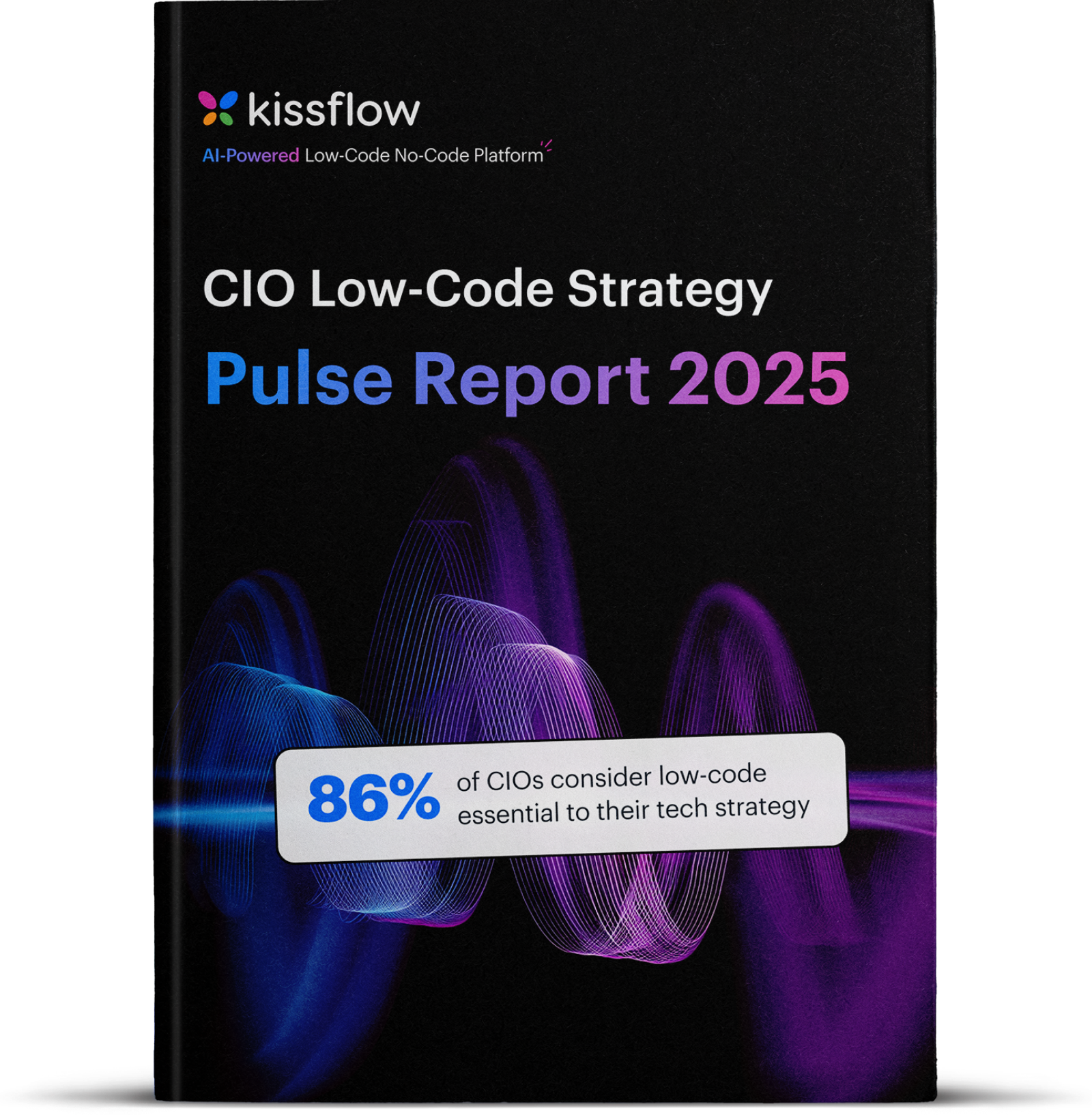Related Articles

Enterprises are constantly under pressure to innovate faster, deliver smarter solutions, and stay ahead of the competition while safeguarding sensitive data and navigating complex regulatory demands. Does that sound like your reality? Low-code platforms are rewriting app development rules, enabling teams to build applications five times faster than traditional methods. But with speed comes responsibility. As organizations scale their use of low-code, concerns about low-code security security gaps and compliance risks have become impossible to ignore.
For instance, a global bank might deploy a low-code platform to streamline its loan servicing processes. However, without robust low-code platform governance, such a deployment could expose sensitive customer data to breaches or lead to non-compliance with GDPR. According to IBM, the global average cost of a data breach in 2023 was $4.45 million, and fines for non-compliance with regulations like GDPR or HIPAA can exceed millions. Enterprises cannot afford to overlook low-code application security.
Security and compliance are foundational to enterprise-grade low-code platforms. CIOs and CTOs tasked with overseeing application development across departments and industries understand that neglecting these aspects can have dire consequences:
Data breaches: Misconfigured apps and poor access controls can expose organizations to breaches, resulting in financial and reputational losses. A comprehensive framework data protection in low-code platforms is essential to mitigate these risks
Regulatory penalties: Regulations like GDPR, HIPAA, and CCPA impose steep penalties for non-compliance, making adherence a top priority.
Customer trust: Data integrity directly influences customer retention and brand loyalty in industries like healthcare and finance.
With 72 percent of IT leaders citing backlogs as a barrier to strategic innovation, low-code platforms can address these issues while ensuring low-code security and compliance remain uncompromised.
Learn more: Open source low-code platform
Modern low-code platforms integrate advanced security features to safeguard sensitive data and protect enterprise systems:
Data encryption: Encryption secures sensitive data during storage and transmission, ensuring unauthorized users cannot access it.
Role-based access control: RBAC allows administrators to define and restrict access levels based on user roles, limiting exposure to sensitive information.
Multi-factor authentication (MFA): Adding layers of authentication minimizes the risk of unauthorized access to critical systems.
Audit logs and monitoring: Continuous monitoring and detailed logs provide visibility into user actions, enabling quick identification and mitigation of potential threats.
These features are integral to creating secure environments for application development, reducing risks without hindering operational agility. They also demonstrate how low-code platform governance features help maintain enterprise-wide security.
Learn more: How Enterprise low code apps simplify digital operations
Low-code platforms excel in compliance by offering pre-configured tools and frameworks tailored to meet global regulatory standards. These capabilities include:
Pre-built compliance frameworks: Platforms like Kissflow adhere to certifications like ISO 27001, HIPAA, and GDPR, ensuring compliance-ready low-code solutions from the ground up.
Real-time audit trails: Continuous tracking of user activities simplifies audits and enables organizations to respond promptly to regulatory inquiries.
Automated governance tools: These tools manage permissions, data access, and usage policies, ensuring that all workflows comply with industry standards.
Such capabilities are essential in industries like healthcare, where HIPAA compliance ensures patient data remains secure, or finance, where GDPR mandates rigorous data protection measures.
Learn more: History of low-code platforms
Despite the growing adoption of (LCNC) low-code no-code platforms, myths about their security and compliance capabilities persist. Let’s debunk some common misconceptions:
"Low-code platforms are less secure than traditional development": Many modern platforms undergo rigorous third-party audits to ensure compliance with global security standards. Their centralized low-code platform governance features often surpass traditional development in mitigating risks.
"Compliance is harder to achieve in low-code environments": Platforms like Kissflow offer pre-configured compliance modules, making adherence straightforward and cost-effective.
"Low-code is only suitable for non-critical apps": Enterprises such as Puma Energy have used low-code to build hundreds of critical applications globally, demonstrating its reliability.
By addressing these misconceptions, businesses can confidently leverage low-code security and compliance to support high-value and compliance-critical applications.
Investing in secure and compliant low-code platforms brings numerous advantages:
Enhanced trust: Customers feel more confident interacting with businesses that prioritize security.
Regulatory adherence: Built-in compliance frameworks streamline audits and reduce the risk of penalties.
Cost savings: Robust security measures reduce the likelihood of breaches and associated financial losses.
Operational efficiency: Advanced low-code platform governance features simplify app management, reducing IT workloads and freeing teams for strategic initiatives.
These benefits highlight the dual role of low-code platforms in accelerating app development while safeguarding enterprise interests.
To fully leverage the potential of low-code platforms, enterprises must adopt best practices that prioritize low-code application security and compliance:
Conduct regular security audits: Frequent audits and penetration testing help identify and mitigate vulnerabilities.
Enable multi-factor authentication: MFA adds an essential layer of security, safeguarding sensitive user accounts.
Use centralized governance tools: Centralized systems ensure consistent management of roles, permissions, and access levels.
Partner with trusted vendors: Collaborate with platforms like Kissflow, which offer enterprise-grade low-code security and compliance features.
Train users on security protocols: Ensure that all users, including citizen developers, understand their role in maintaining security.
Implementing these practices fosters a secure environment where innovation can thrive without exposing the organization to unnecessary risks.
Kissflow meets modern enterprises' security and compliance needs with a unique approach. The platform provides:
Comprehensive compliance certifications: Kissflow complies with GDPR, HIPAA, and ISO 27001, ensuring alignment with global regulatory standards.
Centralized governance: Its governance tools allow IT teams to oversee and manage all applications without micromanaging developers.
Integrated security features: Encryption, RBAC, and MFA are built into the platform, creating a robust security foundation for app development.
These features, combined with Kissflow’s low-code and no-code capabilities, make it the ideal choice for enterprises seeking to innovate securely.
Low-code platforms have redefined the speed and efficiency of application development. However, in an era of increasing cyber threats and stringent regulations, enterprises must prioritize low-code security and compliance. Platforms like Kissflow provide the perfect balance, enabling rapid innovation while safeguarding data and meeting regulatory requirements.
By adopting best practices and leveraging the advanced features of secure low-code platforms, enterprises can address IT backlogs, drive digital transformation, and build a foundation of trust and efficiency.
1. Why is security a critical factor in low-code adoption?
Low-code expands development to more users, making governance and secure access essential. Strong security prevents data risks as automation scales.
2. What are common security practices in low-code development?
Role-based access, encryption, audit trails, secure APIs, and governance policies ensure workflows remain compliant and safe.
3. How can IT prevent shadow IT when using low-code?
Central governance, template libraries, approval workflows, and user permissions ensure business teams build safely.
4. How does low-code help enforce compliance?
Platforms maintain logs, access controls, and approval checkpoints, making compliance easier to track.
5. How should organizations secure low-code integrations?
Use encrypted channels, API governance, rate limits, and regular reviews of integration endpoints.
6. How does low-code reduce the risk of development errors?
Guided builders, validation rules, and prebuilt components limit misconfigurations that could introduce vulnerabilities.
7. Why is continuous monitoring important in low-code environments?
Monitoring helps detect unauthorized access, misconfigurations, and unusual workflow behavior early.
Related Articles
Welcome.
Let's get started.
To begin, tell us a bit about yourself
By proceeding, you agree to our Terms of Service and Privacy Policy
"The beauty of Kissflow is how quick and easy it is to create the apps I need. It's so user-friendly that I made exactly what I needed in 30 minutes."
Oliver Umehara
IT Manager - SoftBank
A Trusted Choice for Companies Globally




Thank you for signing up
Someone from our team will contact you soon.

Know why all the IT leaders converging at booth #602
Earn a chance to be part of our experience event

Get the first look at the 2025 CIO Trends report
Welcome.
Let's get started.
By proceeding, you agree to our Terms of Service and Privacy Policy
Wondering where to start?
Let's talk!
Connect with our solution experts to gain insights on how Kissflow can help you transform ideas into reality and accelerate digital transformation

This website uses cookies to ensure you get the best experience. Check our Privacy Policy


